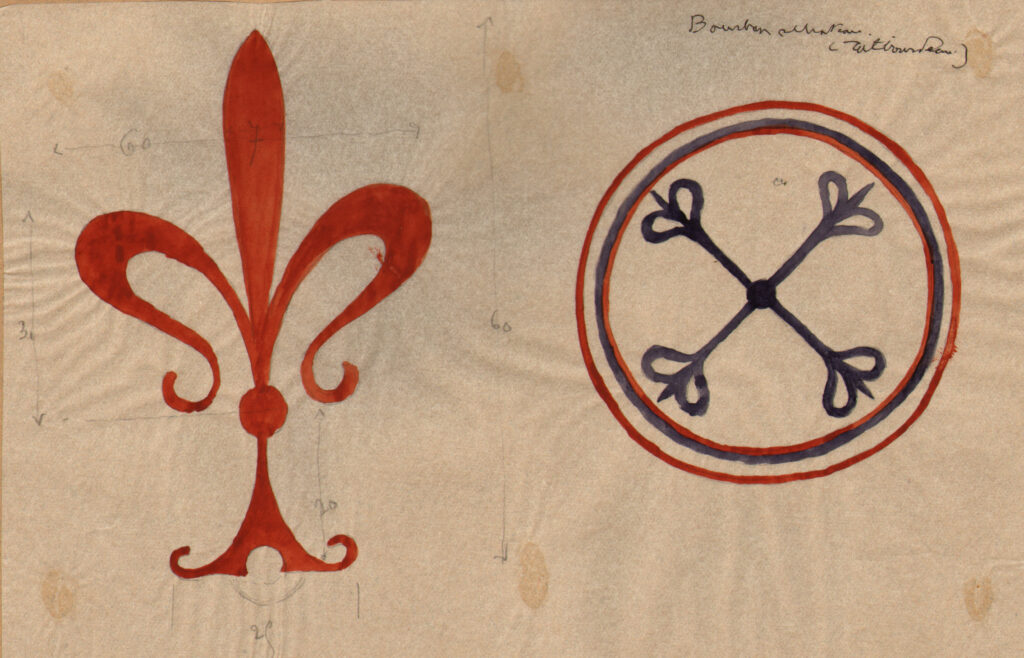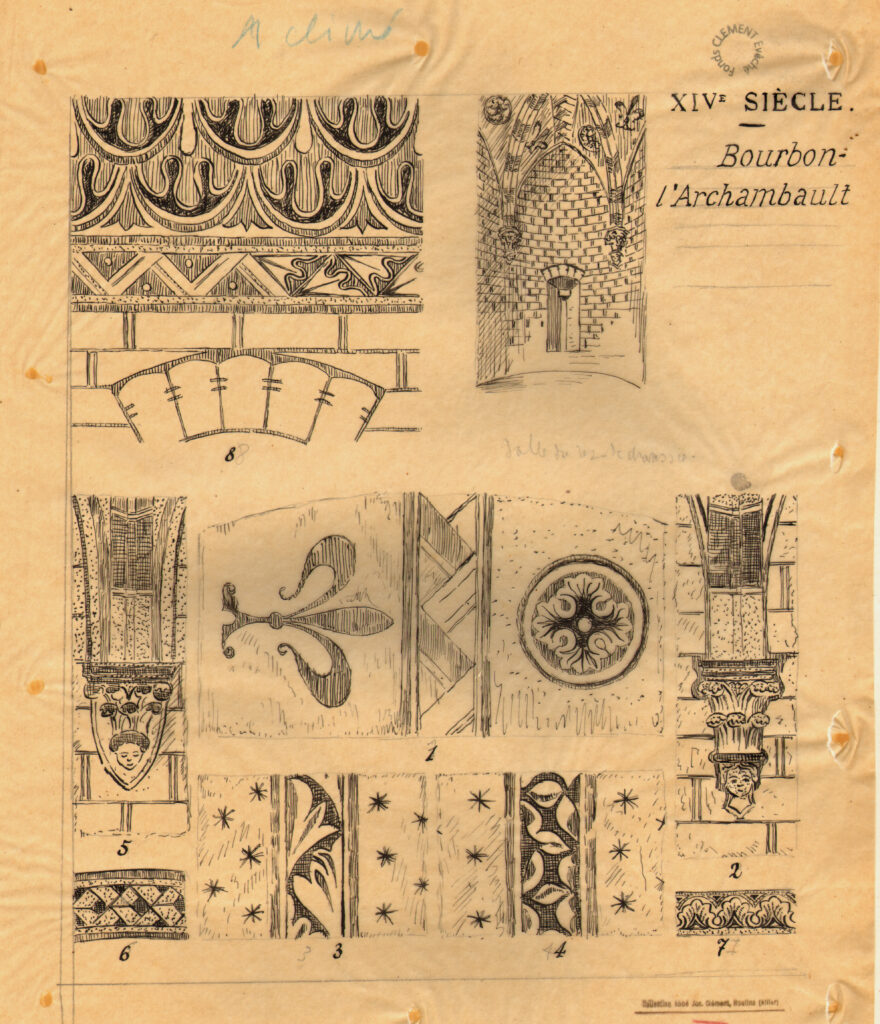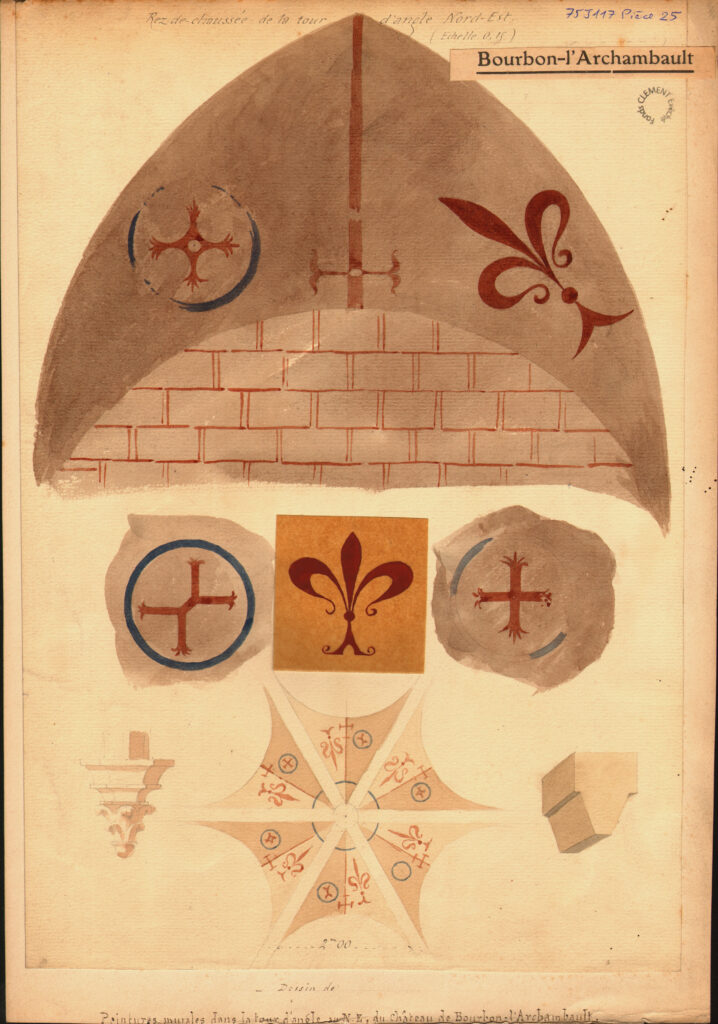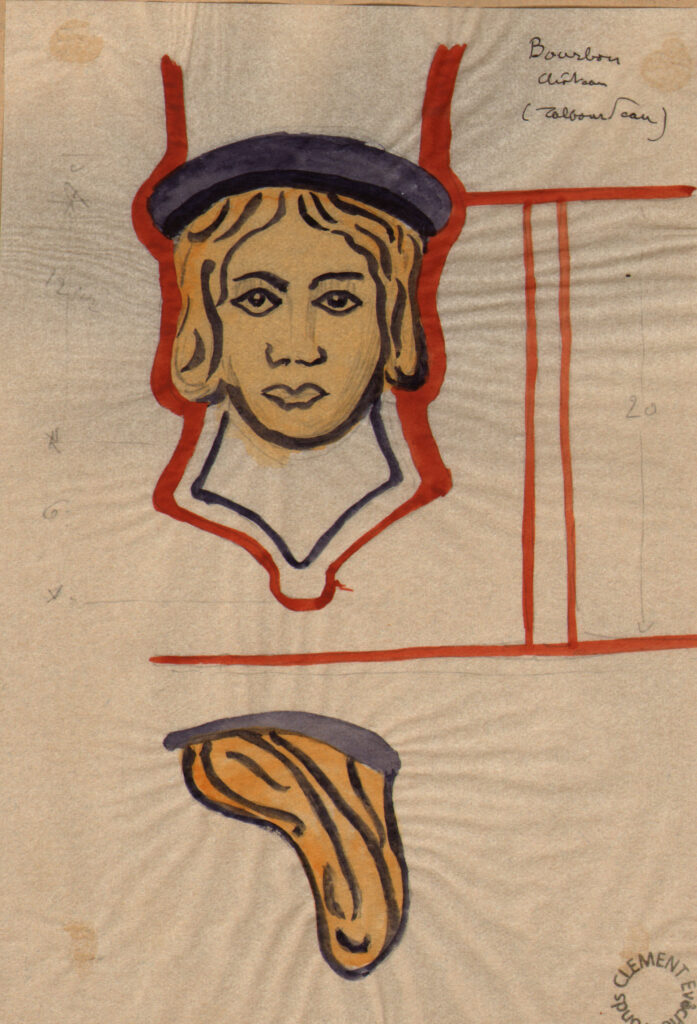Eastern tower, room 7
This tower is the oldest of the three. It was a residential tower and either the vaults and the first-floor chimney are contemporary to the building of the tower. It is the only tower of the three to reveal vestiges of polychromies on a whitewash render dated late XIIth or early XIIIth c.
Look at the lime rendering on the wall, on which was drawn a now faded false-stone pattern in red ochre, simple horizontal lines and double vertical ones.
The splayed vaults of the arrow-slits have also been decorated with the same false-stone red pattern.
The wall-arches were framed by a set of two red and yellow strips. Look carefully at the jack-arches (six the arches divided by the ribs), you will notice medallions and one faded fleur-de-lis.
The ribs were painted in plain red and white.
Beneath the chamfered abacuses, the crocket consoles are representative of the late XIIth century gothic style. They rest on human figures, whose hair was uniformly painted in yellow outlined in black; the crockets were painted in red with blue highlighting.
A red strip outlined the consoles and ended in a triangle with a ring.
Note that all the figures stare straight ahead with bulging eyes.
There is only one lightwell in this room.
In the archway, note the traces of a fire, which could be a sign of damage caused by English mercenaries in around 1365, during the One Hundred-Year war.
© March 2023



